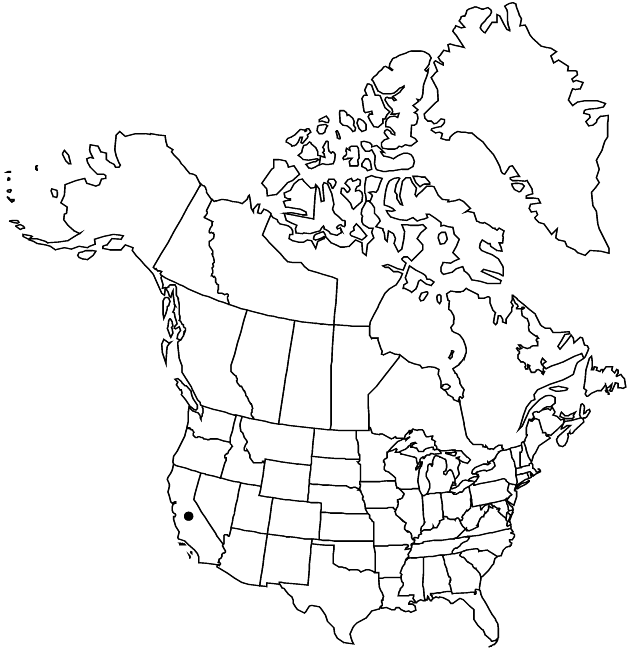Agnorhiza bolanderi
Phytologia 85: 19. 1999.
IllustratedEndemic
Basionym: Balsamorhiza bolanderi A. Gray Proc. Amer. Acad. Arts 7: 356. 1868
Synonyms: Wyethia bolanderi (A. Gray) W. A. Weber
Plants (10–)15–30 cm. Stems decumbent, seldom distally branched. Cauline leaves: blades oblong, ovate, rounded-deltate, or suborbiculate, 4–12 cm, bases ± truncate or cordate, margins entire, faces glabrous (shining, finely gland-dotted, ± glutinous). Heads held among or beyond leaves. Involucres ± campanulate, 15–25(–30+) mm diam. Outer phyllaries ovate to ovate-lanceolate, 10–40+ mm (seldom surpassing ray corollas). Ray florets (7–)8–12, laminae (12–)20–30(–35) mm. Cypselae 7–9 mm, glabrous; pappi 0 or coroniform, 0.1–0.3 mm. 2n = 38.
Phenology: Flowering Mar–Apr(–May).
Habitat: Openings in chaparral
Elevation: 600–800 m
Discussion
Agnorhiza bolanderi is known only from the foothills of the Sierra Nevada, where it evidently grows only on serpentine soils.
Selected References
None.
Lower Taxa
None.

